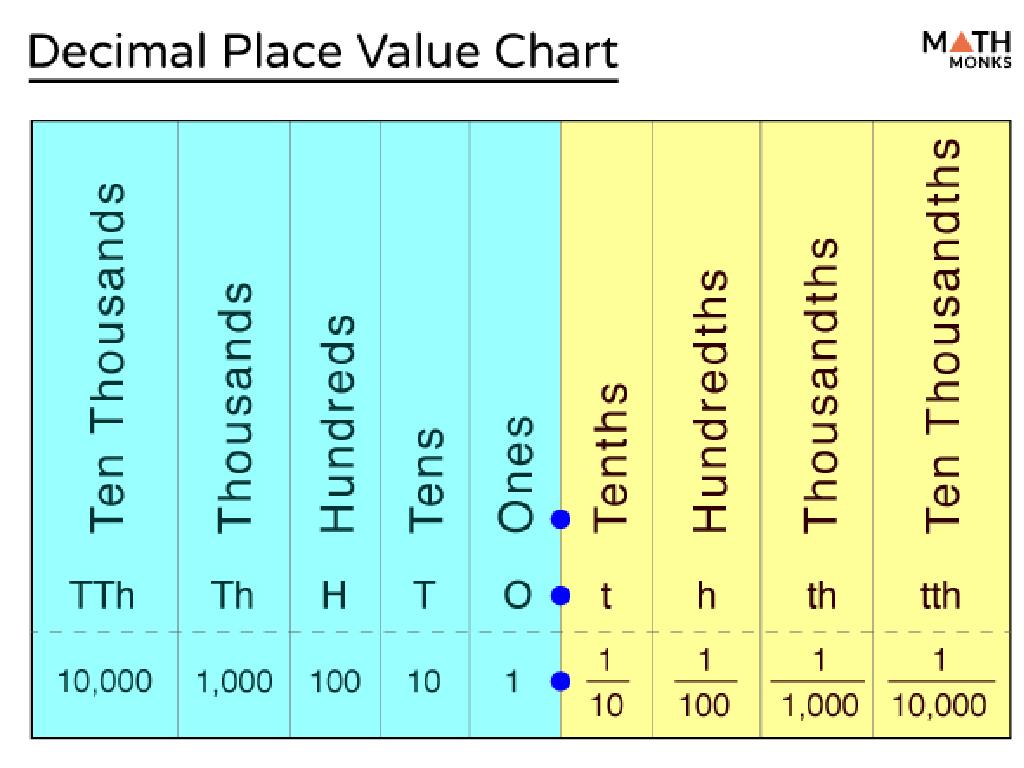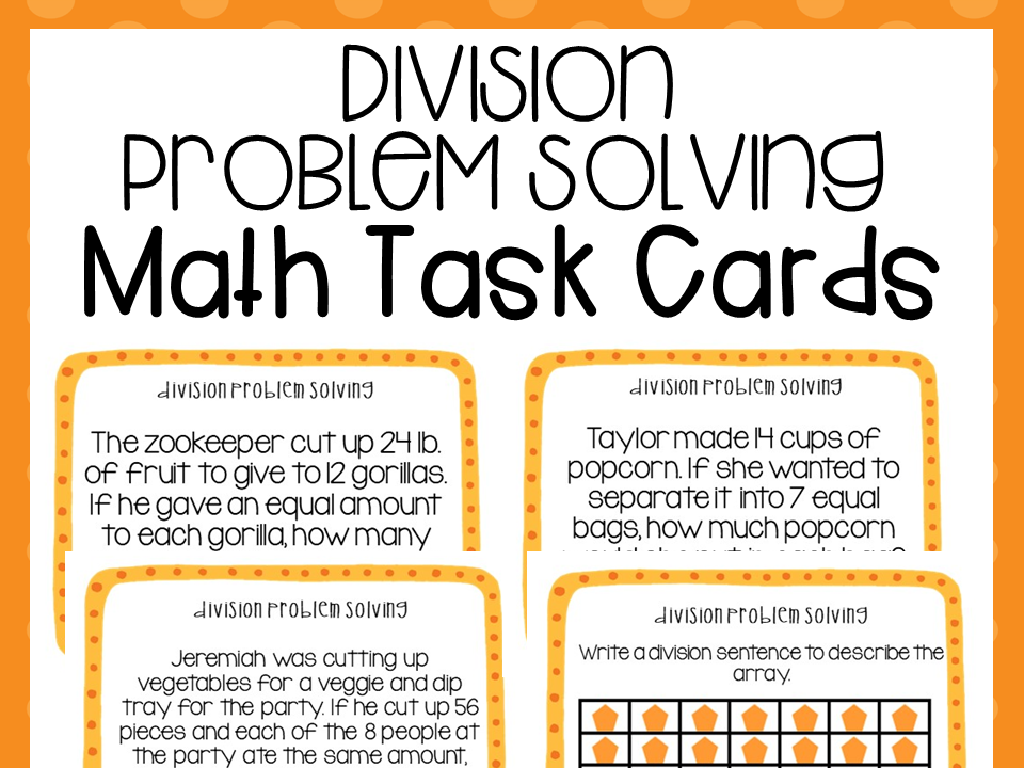Add Integers
Subject: Math
Grade: Sixth grade
Topic: Operations With Integers
Please LOG IN to download the presentation. Access is available to registered users only.
View More Content
Adding Integers: Understanding the Basics
– What are integers?
– Integers include positive, negative numbers, and zero.
– Rules for adding integers
– Same signs add and keep, different signs subtract.
– Real-life application of adding
– Use in temperature changes, bank transactions.
– Importance of integer operations
|
This slide introduces the concept of integers and the rules for adding them, setting the stage for students to understand how these operations apply to real-world scenarios. Begin by defining integers and ensuring students recognize all types of integers. Explain the rules for adding integers, such as when to add and when to subtract based on the signs of the numbers. Provide relatable examples like temperature changes (e.g., what happens when the temperature drops 5 degrees from -3 degrees) or bank transactions (e.g., depositing and withdrawing money) to illustrate the use of integer addition in everyday life. Emphasize the importance of mastering integer operations as a foundational skill for future math concepts. Encourage students to think of other areas where integers are used and to come prepared with questions or examples for the next class.
Understanding Integers
– Define integers
– Integers include whole numbers and their negatives
– Positive vs. negative numbers
– Positive numbers are above zero, negative are below
– Real-life integer examples
– Temperatures, bank balances, elevations
– Adding integers
– Combining integers with addition, e.g., -2 + 3 = 1
|
Introduce the concept of integers to the students by defining them as whole numbers including zero, positive numbers, and their negatives. Explain the difference between positive and negative numbers using a number line. Provide relatable examples such as temperatures (above/below freezing), bank account balances (deposits/withdrawals), and elevations (above/below sea level). Then, demonstrate how to add integers with different signs, emphasizing the rules for combining positive and negative numbers. Encourage students to think of other real-life scenarios where they encounter integers. Prepare to guide them through practice problems in the next class.
Rules for Adding Integers
– Adding same sign integers
– Add the numbers and keep their common sign
– Adding different sign integers
– If signs differ, subtract the smaller from the larger
– Subtract and keep larger number’s sign
– The result takes the sign of the larger integer
– Visualize with a number line
– A number line helps to understand integer addition
|
When teaching students to add integers, start by explaining that integers can be positive or negative. For integers with the same sign, simply add the absolute values and keep the common sign. For integers with different signs, subtract the smaller absolute value from the larger one, and the result takes the sign of the integer with the larger absolute value. Using a number line can be a very effective visual aid to help students grasp these concepts. Have them practice with examples, and encourage them to draw number lines for each problem to see how the integers move left or right from zero.
Adding Integers with Same Signs
– Steps to add positive integers
– If signs are the same, keep the sign and add the numbers: 3 + 2 = 5
– Steps to add negative integers
– If signs are the same, keep the sign and add the numbers: (-3) + (-2) = -5
– Work through examples together
– Example: 4 + 7 = 11 and (-4) + (-7) = -11
– Practice with problem sets
|
This slide introduces students to the concept of adding integers with the same sign. Begin by explaining that when adding two positive numbers, the result is positive, and when adding two negative numbers, the result is also negative. Use the board to work through examples, showing that the sign is kept and the absolute values of the numbers are added. After the explanation, provide a set of practice problems for the students to solve, ensuring a mix of positive and negative integers. Encourage students to explain their thought process as they solve each problem to reinforce their understanding.
Adding Integers with Different Signs
– Understand absolute value
– Absolute value is the distance from zero on a number line, regardless of direction.
– Step-by-step mixed signs example
– Follow an example: (-3) + (+5). Find the absolute value of each and determine the sign of the answer.
– Practice with problem set
– Solve problems with both positive and negative integers to apply what you’ve learned.
– Discuss solutions and strategies
– Review answers as a class, share different methods to find the solution.
|
This slide introduces students to the concept of adding integers with different signs, emphasizing the role of absolute value in understanding integer operations. Start by explaining absolute value as a measure of distance from zero, which helps in visualizing integer addition. Provide a clear, step-by-step example with integers of mixed signs to demonstrate the process. Assign a set of practice problems for students to work on, ensuring a variety of scenarios. Conclude with a class discussion to review answers, clarify doubts, and highlight effective strategies for adding integers with different signs. Encourage students to think about the number line and to use it as a tool for visualizing and solving problems.
Let’s Practice Together: Adding Integers
– Interactive Example 1: Group Activity
– Groups solve a set of integer addition problems.
– Interactive Example 2: Pair Work
– Pairs compare answers and methods from Example 1.
– Q&A Session
– Students ask questions to resolve uncertainties.
– Summarize Key Points
– Review the rules and strategies for adding integers.
|
This slide is designed to engage students in active learning through group and pair activities. For Interactive Example 1, divide the class into small groups and provide each with a set of integer addition problems to solve collaboratively. In Interactive Example 2, have students work in pairs to compare their answers and discuss the different methods they used. The Q&A session is crucial for addressing any confusion and reinforcing understanding. Encourage students to ask questions about the problems they found challenging. Conclude with a summary of the key points about adding integers, emphasizing any strategies or rules that were highlighted during the activities. Provide at least 4-5 different sets of problems for variety and to accommodate different student levels.
Real-World Applications of Adding Integers
– Understanding temperature changes
– How adding integers reflects rising or falling temperatures.
– Managing bank transactions
– Deposits and withdrawals as examples of positive and negative integers.
– Interpreting elevation levels
– Sea level as the reference point; above (positive) and below (negative).
– Adding integers in daily life
|
This slide aims to show students how adding integers is applicable in everyday situations. For temperature, integers represent degrees; adding them can indicate a change in weather. In banking, deposits can be seen as positive integers and withdrawals as negative integers. When discussing elevation, sea level is considered zero, with elevations above and below represented by positive and negative integers, respectively. Encourage students to think of other examples where adding integers is used in real life to solidify their understanding.
Class Activity: Integer Addition Race
– Form groups of four students
– Solve integer addition problems together
– Work collaboratively to add integers
– First team to finish wins
– Ensure all answers are correct
– Accuracy is just as important as speed
|
This activity is designed to encourage teamwork and reinforce the concept of adding integers. Divide the class into groups of four and provide each group with a set of integer addition problems. The goal is for each team to work together to solve the problems as quickly and accurately as possible. The first team to complete all problems correctly wins a small prize or recognition. As a teacher, circulate the room to offer guidance and ensure that students are working effectively. Prepare different sets of problems for each group to prevent copying and to provide a fair challenge for all. This activity not only makes learning fun but also promotes a collaborative learning environment.
Homework and Next Steps: Mastering Integer Addition
– Complete Integer Addition Worksheet
– Prepare for Subtracting Integers
– Tomorrow we’ll explore how to subtract integers.
– Practice is key to success
– Keep practicing addition to build a strong foundation.
– Review today’s lesson
– Go over your notes and try extra problems if you can.
|
This slide is designed to guide students through their post-lesson activities. The Integer Addition Worksheet reinforces today’s learning and provides practice problems to solidify their understanding of adding integers. Students should also begin to prepare for the next lesson on subtracting integers by reviewing their notes and any introductory materials provided. Emphasize the importance of consistent practice to improve their skills. Encourage students to review the concepts from today’s lesson, especially if they found any topics challenging, and to reach out for help if needed. The goal is to build confidence and ensure a strong grasp of integer operations.





